 |
|
The Wicki System—an 1896
|
|
|
|
|
Posted 03 September 2003 The Wicki System—an 1896 Precursor
|

Details of Jankó Piano Keyboard, 1883 version, from the patents. (Click to enlarge.) |

Details of Jankó Piano Keyboard, 1885 version, from the patents. (Click to enlarge.) |
Wicki's bandoneon keyboard, soon after Jankó, was based upon exactly the same two rows of six buttons as the Jankó piano, but with the rows realigned with respect to each other; each button was two semi-tones (one whole tone) higher than the button to its left, and successive rows were offset by half a button, but the nearest buttons in adjacent rows produced notes differing by 5 or 7 semi-tones (a fourth or a fifth).
C# Eb F G A B
C D E F# Ab Bb
or (choosing another section of the extended rows)
F G A B C# Eb
C D E F# Ab Bb
This pattern was extended by repetition both right and left, and the pairs of rows were repeated vertically. But since Wicki was not constrained by the piano structure, he could make his vertical repetitions octaves (where Jankó was constrained to have unison notes).
The general pattern is very simple. Two full rows of 8 or 9 keys are filled out
C# Eb F G A B C# Eb F
F# Ab Bb C D E F# Ab Bb
(here supplying an extra "F" at the right end for symmetry, as Dunkel does), and then these two rows are repeated vertically (see the full diagrams).
In Wicki's keyboard, six of the notes in each octave were repeated, to left and right, in adjacent rows. So where the Chidley system put each octave into 12 notes on two rows of six, Wicki for each octave used 18 notes arranged in two rows of six plus two more rows of three. As Dunkel notes, for a 12-tone equal-tempered scale these duplicated notes were simply different locations for the same notes. But they were important, because it is these repeated notes which make it possible to play in multiple key-signatures using the same fingering.
F# Ab Bb C D E F# Ab Bb
C# Eb F G A B C# Eb F
F# Ab Bb C D E F# Ab Bb
C# Eb F G A B C# Eb F
Here, F#, Ab, and Bb are duplicated, and C#, Eb, and F are duplicated. These 18 notes, on four adjacent levels (3 + 6 + 6 + 3) are all in the same octave, the octave from the "C" shown up to the next "C" above it (two rows higher). In the Wicki keyboard, it is this full set of 18 notes which are repeated for each octave.
For convenience in exposition, we have been using a single set of names for the twelve notes of the equal-tempered scale. For better comparison with the Hayden patent, though, observe that other—equivalent—names can be used for the same notes:
Db Eb F G A B C# D# E#
Gb Ab Bb C D E F# G# A#
This re-spelling of the note names doesn't change the notes at all. "C#" and "Db" are the same, "F#" and "Gb", "Eb" and "D#", "Ab" and "G#", "Bb" and "A#", and even the unfamiliar use of "E#" for the same note as "F". When the notes are labelled in this way, we can see the three vertical sections of the keyboard that Wicki indicated on his patent drawing by making the circles of the central section bolder—all the flats are on the left, all the natural notes of the C major scale in the middle, and all the sharps on the right. Each row of nine keys still contains only six different notes plus three repeated notes (but repeated from a different octave).
Dunkel sums up the advantage of Wicki's keyboard, in words which sound familiar from their later application to the Hayden keyboard: "In Wicki's arrangement the scale in every key signature can be played with exactly the same fingering, as can the equivalent chords in every key."
Turning now to the Hayden system, it is necessary to consult only the Hayden patent. The title of the patent is "An Arrangement of Notes on Musical Instruments". The abstract says "The present invention places notes on musical instruments along several adjacent paths [rows]; so that along the paths, notes at intervals of whole tones are close together, and between the paths, notes at intervals of fourths and fifths are close together … Keyboards for Organs, Accordions, and in particular Concertinas are described in greater detail. Several different forms of multi-stringed musical instruments are described; and a few details of other musical instruments that may use the invention are given." So the invention is purely the arrangement of notes, independent of any particular instrument such as a concertina (as was true of Wicki also).
Hayden's patent does mention the Jankó piano keyboard patent ("Jankó 1885 Pat No. 536"), as an example of a "neutral chromatic keyboard". It observes that "The disadvantages of these keyboards are that they are difficult to begin to learn to play, having complex fingering patterns, and are also difficult to learn to read music with. Only the Jankó Keyboard has these disadvantages to a very slight extent, but on the other hand it has most of the large linear width difficulties associated with the Standard [piano] Keyboard."
The Hayden patent mentions that in the Hayden system "…notes sounded at consecutive Touch Points [buttons] on the same Musical Path [row of buttons] have a musical interval of a whole tone between them. (No claim is made that this in itself is new. This is used on the Jankó 1885 Keyboard …)." It goes on immediately to clarify then what is novel about the Hayden invention: "The Musical Paths [rows of buttons] are arranged relatively to each other in the present invention in such a way that the Note sounded at one Touch Point [button] on one Musical Path [row] and the Note sounded at the Nearest Touch Point on an adjacent Musical Path are a Musical Interval of a Fourth or a Fifth apart; or if two Touch Points on the same Musical Path are equidistant from a Touch Point on an adjacent Musical Path, then one of these pairs across the paths will sound a Musical Fourth apart and the other pair across the paths will sound a Musical Fifth apart …." Of course, this particular relationship between two adjacent rows of notes at whole-tone intervals, where each note is diagonally adjacent to its lower fourth and fifth and upper fourth and fifth, is also precisely the claim of Wicki's patent.
Hayden's patent does not mention Wicki's patent (as Wicki's patent does not mention Jankó's patent). By a curious coincidence, the research undertaken for Hayden's patent missed finding two patents from the same year, 1896: the patent for the Crane Duet was not found and Brian Hayden was for a long time under the impression that it had never been patented, and apparently this patent for Wicki's bandoneon keyboard was missed as well.
A close comparison of the Wicki keyboard 1896 (taken from the patent) and of the Hayden keyboard 1986 (taken from its patent), will demonstrate that the arrangements are essentially identical. Since the Wicki keyboard was drawn for an instrument with 51 buttons on one side (or 54 buttons in Dunkel's redrawing), the corresponding Hayden keyboard example is Fig. 12 from his patent, described there as "an arrangement of notes suitable for the treble keyboard of an Accordion" with 60 buttons, nearly the same size. The Hayden patent goes on to say "Several of the notes appear on one side of the Keyboard as "sharps", and on the other side of the Keyboard as "flats"; these can be linked together to play the same sets of reeds …." It will be noted that the repeated keys are the same as on Wicki's keyboard, with the same duplicated keys within an octave as were discussed above. (The two arrays break the edges of the pattern at different places on some rows, but the pattern is the same.)
There is no doubt that Brian Hayden independently re-discovered this keyboard layout in the late 1960s, as he has clearly described, and no doubt also that the idea was unfamiliar to (nearly) everyone who learned about the Hayden system thereafter. There is nothing about the unearthing of the lost Wicki patent now which should detract in any way from Hayden's originality nor from the interest which his system has for concertinists.6
But it is not true that the total human experience with the design is confined to the handful of people who have contrived to buy Hayden instruments since the 1970s. Instead, as we know now, this keyboard design was known to at least some players of large free-reed squeezeboxes (so-called "unisonoric" bandoneons—not unlike large duet concertinas) as early as 1896, more than one hundred years ago. Indeed, the “Wicki-Hayden” system (using this to mean a Hayden-system duet with a button field 9 columns wide) is only twelve years younger than the Maccann system.
It may well be that the “Wicki-Hayden” system has just never been tried adequately, that some great performers on it may yet come along, that it is the next great idea in concertinas, and so forth. But it is also true that the “Wicki-Hayden” system turns out to be in a position not unlike that of the Wheatstone Double system, a system which has been proposed but which failed to gain popularity—indeed, failed so completely that it was very nearly forgotten, even by those most interested in free-reed instruments.
The “Wicki-Hayden” system may, in fact, be better suited to the bandoneon, and to other instruments rather larger than a concertina. The unisonoric ("same note on push and pull") bandonion illustrated at the top of this page, for example, was made by Harry Geuns in 2003–4; it uses the "Kusserow" keyboard rather than the Wicki keyboard, but it is about the the same size, with more than 50 keys on each side. This is nearly the same size as the Wicki system, so it serves an an example of what a Wicki instrument might look like. (According to Geuns's layouts, on the right side the Kusserow arrangement of notes along the rows mostly increases by half-tones in chromatic order, like a wider version of the early Wheatstone "Double" duet system, whereas the Wicki always increases by whole tones in chromatic order.) It has about twice as many keys on each side as a Hayden system concertina, which typically has 25–30 buttons on each side. In order that a player may reach all the keys, it has a loose hand-strap running from edge to edge.
In the experience with recent Hayden-system duet concertinas, a very frequent complaint has been that the number of buttons on the concertinas was too limited, so that the regular pattern of notes was interrupted by "edge effects" as the player ran off the button field and had to "wrap around" to the other edge, or to alter fingering patterns for lack of enough rows. An instrument limited to 46 or 57 or even 67 keys has seemed too small to make good use of the button layout—some players call for larger instruments with more repeated notes and more rows, while others caution that large instruments are heavy and clumsy.
The conflict seems intrinsic to the “Wicki-Hayden” system. The full system (with duplicated keys to right and left) is what makes it possible to play with uniform fingering and in any key signature with the same fingering, but it requires 18 buttons per octave where the Maccann system, for example, uses 12 buttons per octave. So a 46-key Maccann would have the range of a 69-key “Wicki-Hayden”, and to have the range of a 67-key Maccann would require a “Wicki-Hayden” with over 100 keys--and that is very nearly what the 51 or 54 keys per side of the Wicki patent provides. But without the extra keys in each octave, the uniformity and the ability to transpose with constant fingering is lost. Indeed, it seems that the compromises required to fit the “Wicki-Hayden” system onto a smaller concertina limit or remove entirely many of its advantages. (See Which Duet Concertina—Hayden or Maccann?)
Wicki System:
Figure from the Wicki Patent (1896)
Dunkel redrawing from Wicki Patent

Dunkel, redrawing of Wicki Patent (1896), English note notation added in red.
Hayden System:
Figure 12 from the Hayden Patent (1986)
Notes
1 Credit for unearthing this fact belongs to Göran Rahm, who happened to mention in a posting he made at www.concertina.net that he knew of a precursor of Brian Hayden's keyboard, identical to the Hayden keyboard arrangement and patented many years earlier in Europe by Wicki. Göran Rahm afterwards wrote to me that he had re-discovered this keyboard about fifteen years previously, as a bandoneon keyboard illustrated in the first edition of Maria Dunkel's book. With that information, it was very easy to locate the facts. [ Back to text ]
2 Maria Dunkel, Bandonion und Konzertina: Ein Beitrag zur Darstellung des Instrumententyps (Berliner Musikwessenschaftliche Arbeiten, Band 30), 2. Auflage, München–Salzburg: Musikverlag Emil Katzbichler, 1996. [First edition, 1987, not seen.] This volume is unfortunately not yet available on the web. A web source for bandoneons is Christian Mensing, Christian’s Bandoneon Page, which includes a mention of Kaspar Wicki and his keyboard. See also a dealer’s site, Música Argentina. [ Back to text ]
3 Kaspar Wicki seems to have interested himself in everything from washing machines to bicycles. Patents granted to Wicki include:
| CH9106 | 05/15/1895 | Stimme fuer Zungeninstrumente |
| CH13329 | 06/15/1897 | Tastatur fuer Musikinstrumente |
| CH19892 | 09/30/1900 | Ventil mit Schubcylinder fuer Blasinstrumente |
| CH32339 | 07/15/1905 | Vorrichtung zur Übertragung der Bewegung einer Motorwelle auf einen Drehkoerper vermittelst Kette |
| CH42425 | 02/01/1909 | Verbessertes Zweirad mit Kettenantrieb |
| CH42676 | 02/16/1909 | Verbessertes Zweirad mit Kettenantrieb |
| CH42875 | 03/01/1909 | Waschmaschine mit Waeschekessel und Wasserschiff |
| CH43127 | 04/01/1909 | Verbessertes Zweirad |
| CH47056 | 06/01/1910 | Rohrverbindung an Fahrradgestellen |
| CH65045 | 10/01/1914 | Fahrrad mit Kettenantrieb |
| CH73227 | 02/01/1917 | Wechselgetriebe vermittelst Zahnraeder |
| CH75804 | 09/17/1917 | Wechselgetriebe |
[ Back to text ]
4 Full text of Kaspar Wicki, Swiss patent Nr. 13329, 30 October 1896, "Tastatur für Musikinstrumente" (Keyboard for Musical Instruments).
This keyboard is suitable mainly for instruments such as harmonikas, konzertinas, blasakkordeons, and all piano-like instruments.
The keys or buttons (in two colors to distinguish the natural notes in the key of C) are arranged in such a way that one can play in all key signatures using the same fingering. The notes which are adjacent left-to-right on one row are always one full tone from each other. Notes in the adjacent row are the associated fifths (in the other direction the associated fourths) and notes two rows away in each direction are the octaves. The keys shown in the Figure by bolder circles [alternating rows of 3 and 4 notes, running down the center] constitute the C major scale; accidentals in C major are on either side, flatted notes to the left and sharped notes to the right, with the result that one can play in scales with flats relative to the C-major scale toward the left side, and in scales with sharps toward the right side.
Patent claim: A keyboard for musical instruments, essentially, and regardless of the number of buttons, as described.
—translated from the Wicki patent
[ Back to text ]
5 Dunkel, page 92–93. (Note that Dunkel's text prints the Wicki patent number as "99324", twice; a correction to "99325" is printed on an extensive errata sheet inserted loose between pages, which may be missing from reference copies. But both numbers differ from that clearly shown on the scanned patent, and Dunkel's number is currently recognized by the Swiss intellectual property office as referring to a completely different patent issued in 1923.)
In the second half of the nineteenth century some attempts were made to modify the Piano keyboard to accommodate the musical need for equal status of all 12 tones of an octave. One model which dispensed with a privileged status for the C major scale, came from H. J. Vincent. Discussion of Vincent's new keyboard occupied the 1876 "Chroma-Verein des gleichstufigen Tonsystems". In related articles in the magazine published by A. Hahn starting in 1876, Die Tonkunst, Paul von Jankó developed by 1882 a keyboard (named after himself) whose distinctive feature was its construction from whole-tone intervals. For the 12 tones of an octave, two rows with six whole tone intervals each must necessarily be offset by one semitone; thus the upper row contains C D E F# G# A#, and the adjacent row (shifted by a gap) contains C# D# F G A B. In 1896, Kaspar Wicki, of Munster (Switzerland), received patent No. 99325 for his "New Style Keyboard" (see table 20), which was an indirect application of the Jankó system applied to the Bandonion— though the Jankó system is not mentioned in the text of the patent. Also Wicki does not position the two adjacent whole-tone rows as Jankó does, offset by a semitone, and its keyboard interestingly enough does not depend upon the equal-tempered scale. For the range of a single octave it employs a total of 18 notes (12 + 6), which it assigns to keys symmetrically arranged in the grouping 3 + 6 + 6 + 3 on four levels. A three-part keyboard results: the central region of the natural notes is enclosed by the accidentals, raised half a tone on one side and lowered half a tone on the other side. The multiple accidentals can be treated as duplicate notes "when the 12-note equal-tempered chromatic scale is employed, and it is naturally easy to take advantage of the presence of these extra keys as enharmonic equivalents". In Wicki's arrangement "the scale in every key signature can be played with exactly the same fingering, as can the equivalent chords in every key". Whether this idea based on using the whole-tone interval will be employed in future Bandonion development is yet to be seen. It is important to note that Wicki began from the whole-tone interval and employed a block system based on six whole steps. Naturally he thereby retained the advantage of uniformly-positioned intervals in all keys, specifically on one diagonal the fifth, on the other diagonal the fourth. Each individual note has a constant spatial relationship not only to its lower-fifth and its lower-fourth, but also to these same intervals in the rising direction.
—translated from Dunkel, page 92–93
[ Back to text ]
6 Brian Hayden was not the last person to re-discover this keyboard; it seems to have been re-re-discovered—and re-re-patented—by William Casey Wesley in late 2002, as United States Patent 6501011, Sensor Array MIDI Controller, "a MIDI controller musical instrument with buttons … for controlling musical notes". The Wesley system appears to me to be essentially the same as the Hayden system with minor adjustments, except that the button-arrangements for left and right hands are said to be mirror-reversed, which would be a very good improvement. (Brian Hayden in his patent also mentions mirroring, but expresses a preference for un-mirrored arrangements.) Wesley does not cite Hayden's patent. The Wesley patent envisions employing the system on large static button arrays to be played with un-tethered hands, not to smaller instruments the size of a concertina. This patent was pointed out to me by James Plamondon in a personal communication. [ Back to text ]
Have feedback on this article? Send it to the author.
Reprinted from the Concertina Library
http://www.concertina.com
© Copyright 2000– by Robert Gaskins

Contents
- The Wicki System—an 1896 Precursor of the Hayden System
- Diagram of Wicki System (1896)
- Diagram of Hayden System (1986)
- Notes
Links to related documents
- Other articles
by Robert Gaskins
-
 Tastatur für Musikinstrumente (1896)
Tastatur für Musikinstrumente (1896)
- by Kaspar Wicki
- Switzerland Patent Nr. CH13329, dated 30 Oktober 1896. 2 pages, 1 illustration. This patent describes a keyboard system identical to the Hayden system which was independently re-discovered 90 years later. “The keys or buttons … are arranged in such a way that one can play in all key signatures using the same fingering. The notes which are adjacent left-to-right on one row are always one full tone from each other. Notes in the adjacent row are the associated fifths (in the other direction the associated fourths) and notes two rows away in each direction are the octaves.” [Translated from the German original.]
- Posted 01 March 2004
- » read full document in pdf
-
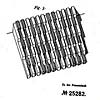 Klaviatur für Tasteninstrumente (1883)
Klaviatur für Tasteninstrumente (1883)
- by Paul von Jankó
- German Patent Nr. DE25282, 1883. A piano keyboard design related to the Wicki concertina keyboard.
- 01 March 2004
- » read full document in pdf
-
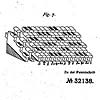 Neuerung an der unter No. 25282 patentirten Klaviatur (1885)
Neuerung an der unter No. 25282 patentirten Klaviatur (1885)
- by Paul von Jankó
- German Patent Nr. DE32138, 1885. A piano keyboard design related to the Wicki concertina keyboard.
- 01 March 2004
- » read full document in pdf
-
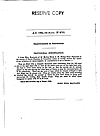 Improvements in Concertinas (1884)
Improvements in Concertinas (1884)
- by John Hill Maccann
- British Patent No. 4752 of 1884, Provisional Specification (12 March 1884) and Complete Specification (18 November 1884) with two figures. 4 pages. The one and only patent dealing with the Maccann Duet concertina. Maccann's invention creates a fully chromatic Duet (capable of playing in all key signatures) based on the older diatonic Wheatstone “duett” system.
- Posted 15 November 2001
- » read full document in pdf
-
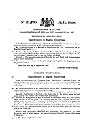 Improvements in English Concertinas (1896)
Improvements in English Concertinas (1896)
- by John Butterworth
- British Patent No. 21,730, Provisional Specification, (28 September 1896), and Complete Specification (29 June 1897), with two figures. 3 pages. The patent describing the “Crane” (or “Triumph”) duet concertina system. Crane & Sons Ltd. were large musical instrument manufacturers in Liverpool. The system was adopted by the Salvation Army under the name “Triumph” from 1912, and eventually Wheatstone was claiming it was because of “the disposition of the keys being more suited to the playing of sacred music”.
- Posted 15 February 2003
- » read full article
-
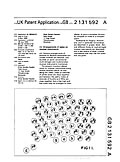 Arrangements of Notes on Musical Instruments (1986)
Arrangements of Notes on Musical Instruments (1986)
- by Brian Hayden
- British Patent No. GB2131592, 1986. 14 figures, 17 pages. This was an independent re-discovery of the system that had been patented by Kaspar Wicki ninety years earlier. "Various arrangements of touches on Musical Keyboards previously evolved are detailed … . The present invention places notes on musical instruments along several adjacent paths … . Keyboards for Organs, Accordions, and in particular Concertinas are described in greater detail … ." [from the Application]. Date Filed: 02.12.1982; Patent Granted with effect from 20.08.1986; Date of Last Renewal: 29.11.1989; Date Not in Force: 02.12.1990; Patent Ceased on 02.12.1990. [Patents Register Entry, UK Patent Office]
- Posted 01 September 2003
- » read full document in pdf
-
 A Chat with Brian Hayden
A Chat with Brian Hayden
- by Wes Williams
- Brian Hayden was interviewed in 2001 about his background, his invention of the Hayden System, his views on other duet systems, and his suggestions for learning and playing the duet concertina. Contains keyboard diagrams for nine duet systems: the Early Wheatstone Duett, Early Wheatstone Double, Maccann, Jeffries, Crane (Triumph), Linton, Rust ("Piano"), Late Wheatstone Chidley, and Hayden. (There is also a PDF version of the article.) Also published at concertina.net.
- Posted 15 February 2003
- » read full article
- » read full article in pdf
-
 Which Duet Concertina—Hayden or Maccann?
Which Duet Concertina—Hayden or Maccann?
- by Robert Gaskins
- A comparative review of two concertinas: a Stagi Hayden Duet concertina (c. 2003), and a Lachenal Maccann Duet concertina (c. 1900). Each instrument has 46 keys, and each cost £500 ($800) ready to play. On almost every measure, the antique Lachenal Maccann Duet turned out to be preferable to the modern Stagi Hayden Duet—by a considerable margin. The advantages frequently mentioned as belonging to the Hayden system (uniformity of fingering in all key signatures, automatic transposition) turned out to be significantly compromised by the restricted size of the Stagi. If you want to play a duet concertina, at present you will probably do best to buy a Maccann Duet.
- Posted 01 March 2004
- » read full article
Send this page to a friend.
This page was last changed | |
|
© Copyright 2000– by Robert Gaskins |


